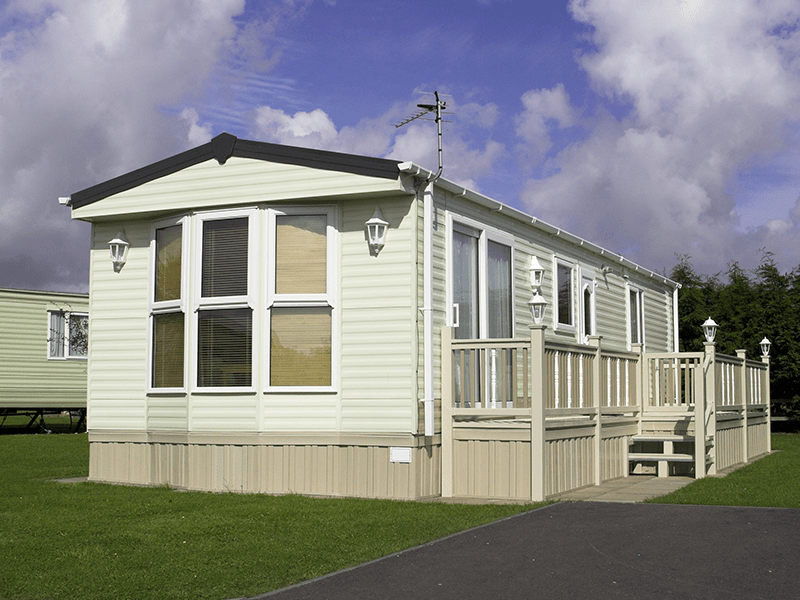Important Tips for Mobile Home Maintenance

5 Tips for Mobile Home Maintenance
Just like any other piece of property, mobile homes require vigilant upkeep to protect your family and investment.
-
Keep Your Home Properly Leveled
One essential concern when it comes to mobile home maintenance is making sure your home is leveled properly. Though mobile homes are leveled during installation, over time, they need to be adjusted.
Keep an eye out for doors that don’t close properly, and windows that don’t seem to fit right, as it may mean your home is unbalanced. If your floors are creaking or you notice cracks in walls or ceilings, that is another indication that your mobile home needs to be re-leveled. To verify, use a carpenter’s level at various places in your home.
While there are some do-it-yourself kits available, a lot is riding on a successful execution, and it may be best to call a professional.
-
Maintain Your Mobile Home Skirting
Your mobile home’s skirting, or perimeter enclosure insulates the whole residence, protects the belly of the structure, adds curb appeal and promotes energy efficiency. If you notice holes in the skirting, repair them immediately so they don’t cause further damage.
The skirting needs to be secure but also requires adequate venting so humidity and mold can’t damage the home. Proper ventilation is no joke! There is even a formula to determine if your mobile home has proper skirting ventilation. The formula (1:150) is based on the square footage of your home. For every 150 square foot of space under your home, you need one square foot of venting.
-
Know Your Home’s Plumbing
Understand that plumbing systems in mobile and manufactured homes differ slightly from that in traditional homes, but the overall concept is the same. In mobile homes, the plumbing pipes are located under the structure and are stubbed up through the floor, as opposed to within the walls, where they are located in conventional homes.
Frequently, mobile home plumbing systems are equipped with plastic or cross-linked polyethylene (pex) waterlines and PVC piping. In conventional homes, the system is likely to be made of galvanized pipe or copper waterlines.
In many areas, codes for site-built houses are quite strict and have changed very little over the years. Whereas manufacturers of modular and mobile are often the first to test and apply new technology.
Familiarize yourself with the system’s ventilation pipes and the main stop valve so you can shut off your water in the event of an emergency.
-
Prioritize Roof Care
The roof is your home’s first line of defense against the outside elements. Mobile homeowners need to prioritize proper roof care to keep the property safe and sound. Due to the design of mobile homes, though, certain areas require particular attention.
Many mobile homes have flat roofs. Flat roofs—or nearly flat roofs—have special needs, especially in cold winter climates. Heavy snow can lead to property damage, and significant accumulations must be removed quickly. Repair and replace damaged roofing materials to mitigate problems.
You can extend the life of your roof by sealing it annually. Regular sealing can also prevent other issues from becoming worse. The type of roofing on your home will determine how often you need to seal it. Metal roofs, for example, require more frequent sealing than those with shingles.
The National Roofing Contractors Association (NRCA) urges homeowners to inspect their roofs at least two times each year, both in the spring and the fall.
-
Perform Regular Inspections
As with any type of house, performing regular inspections—both inside and out—is a crucial responsibility of being a homeowner. By taking the time to check these key points of your home, you’ll be able to catch potential problems before they become costly headaches.
- Masonry piers
- I-beams
- Wood floor framing
- Anchors and straps
- Windows and doors
- Roof
For a more thorough inspection, contact a home inspection service, like Inspect-It 1st. Our professional team performs inspections on all sorts of properties, from commercial buildings to manufactured housing. To find an Inspect-It 1st location near you, click here.
